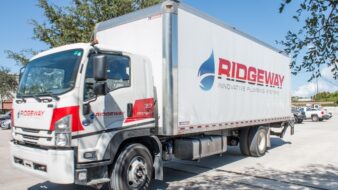Ann Arbor, Mich. — To further protect surface and ground water quality, the U.S. Environmental Protection Agency (EPA) has published a model program for onsite wastewater treatment systems in the Chesapeake Bay watershed to help states reduce excessive nutrients, such as nitrogen, from entering the Bay from onsite or septic systems. NSF International’s Wastewater Standards are referenced in the EPA model program as a basis to evaluate treatment technologies intended to help protect human health and the environment from inadequately treated wastewater.
The model program is part of the EPA’s collaboration with state and local partners to reduce nitrogen releases from onsite treatment systems. The model program will help enable an executive order that President Obama signed in 2009 recognizing the Chesapeake Bay as a national treasure and calling on the government to protect and restore the nation’s largest estuary and its watershed.
“We support EPA’s move to further protect our nation’s water supply as it aligns with NSF International’s commitment to protect and improve environmental health,” said Tom Bruursema, General Manager of NSF’s Sustainability Division. “EPA’s model program for improving our nation’s onsite wastewater infrastructure references NSF International’s American National Standards (ANSI) wastewater standards as the basis to evaluate the proper selection, use and management of onsite, decentralized treatment systems.”
According to the EPA, about 20 percent of U.S. residences collectively discharge four billion gallons of sewage daily into onsite systems, and it is estimated that between 10 and 20 percent may not be adequately treating wastewater. When properly designed, sited and maintained, decentralized systems can treat wastewater effectively and protect surface water and groundwater from pollutants, nutrients and emerging contaminants.
For the past 40 years, NSF International has helped to address this issue, developing 12 American National Standards for drinking water and wastewater treatment to assess a system’s ability to remove contaminants. This includes NSF/ANSI Standard 245: Wastewater Treatment Systems – Nitrogen Reduction, which establishes performance test requirements for residential wastewater treatment systems designed to provide nitrogen reduction, and NSF/ANSI Standard 360: Field Performance Verification that establishes consistent site selection, sampling, lab analysis and data evaluation methods for obtaining field performance results for onsite wastewater treatment systems.
Both NSF standards referenced in EPA’s model program evaluate systems sized between 400-1500 gallons per day and require compliance with NSF/ANSI Standard 40: Residential Wastewater Treatment Systems. This standard establishes base performance criteria for residential treatment systems required by most U.S. states and counties.
NSF International has supported all stakeholders, including the onsite wastewater treatment industry, government agencies and consumers with third-party product testing and certification to consensus-based NSF American National Standards. Systems bearing the NSF Certification Mark have demonstrated product performance and reliability to national standards, as well as widespread acceptance of innovative water treatment technologies.
NSF International continues to expand its water and environmental expertise through its sustainability division. NSF also has developed a standard and certification program for residential and commercial onsite water reuse treatment systems to ensure systems properly treat graywater and combined wastewater.
For more information about NSF’s wastewater programs, visit nsf.org/info/wastewater.




Join the conversation: